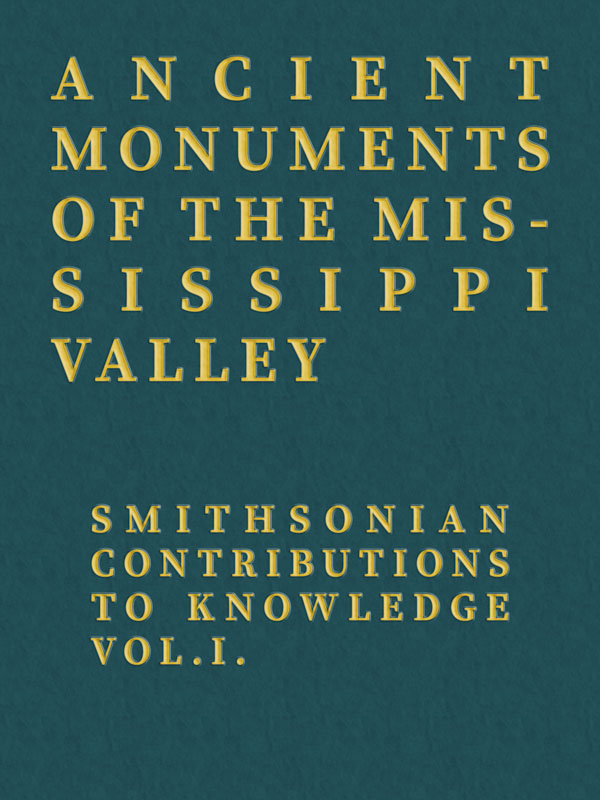Ancient Monuments of the Mississippi Valley / Smithsonian Contributions to Knowledge, Vol. I.
Play Sample
ADVERTISEMENT.
This volume is intended to form the first of a series of volumes, consisting of original memoirs on different branches of knowledge published at the expense, and under the direction of the Smithsonian Institution. The publication of this series forms part of a general plan adopted for carrying into effect the benevolent intentions of JAMES SMITHSON, Esq. , of England. This gentleman left his property in trust to the United States of America, to found at Washington an institution which should bear his own name, and have for its objects “the increase and diffusion of knowledge among men.” This trust was accepted by the Government of the United States, and an Act of Congress was passed August 10th, 1846, constituting the President and the other principal executive officers of the general government, the Chief Justice of the Supreme Court, the Mayor of Washington, and such other persons as they might elect honorary members, an establishment under the name of the “SMITHSONIAN INSTITUTION, FOR THE INCREASE AND DIFFUSION OF KNOWLEDGE AMONG MEN.” The members and honorary members of this establishment are to hold stated and special meetings for the supervision of the affairs of the Institution, and for the advice and instruction of a Board of Regents, to whom the financial and other affairs are entrusted.
The Board of Regents consists of three members ex officio of the establishment, namely, the Vice President of the United States, the Chief Justice of the Supreme Court, and the Mayor of Washington, together with twelve other members, three of whom are appointed by the Senate from its own body, three by the House of Representatives from its members, and six citizens appointed by a joint resolution of both houses.To this board is given the power of electing a Secretary and other officers, for conducting the active operations of the Institution.
To carry into effect the purposes of the testator, the plan of organization should evidently embrace two objects,—one, the increase of knowledge by the addition of new truths to the existing stock; the other, the diffusion of knowledge thus increased, among men.No restriction is made in favor of any kind of knowledge, and hence each branch is entitled to and should receive a share of attention.
The Act of Congress, establishing the Institution, directs, as a part of the plan of organization, the formation of a Library, a Museum, and a Gallery of Art, together with provisions for physical research and popular lectures, while it leaves to the Regents the power of adopting such other parts of an organization as they may deem best suited to promote the objects of the bequest.
After much deliberation, the Regents resolved to divide the annual income, thirty thousand nine hundred and fifty dollars, into two equal parts,—one part to be devoted to the increase and diffusion of knowledge by means of original research and publications,—the other half of the income to be applied in accordance with the requirements of the Act of Congress, to the gradual formation of a Library, a Museum, and a Gallery of Art.
